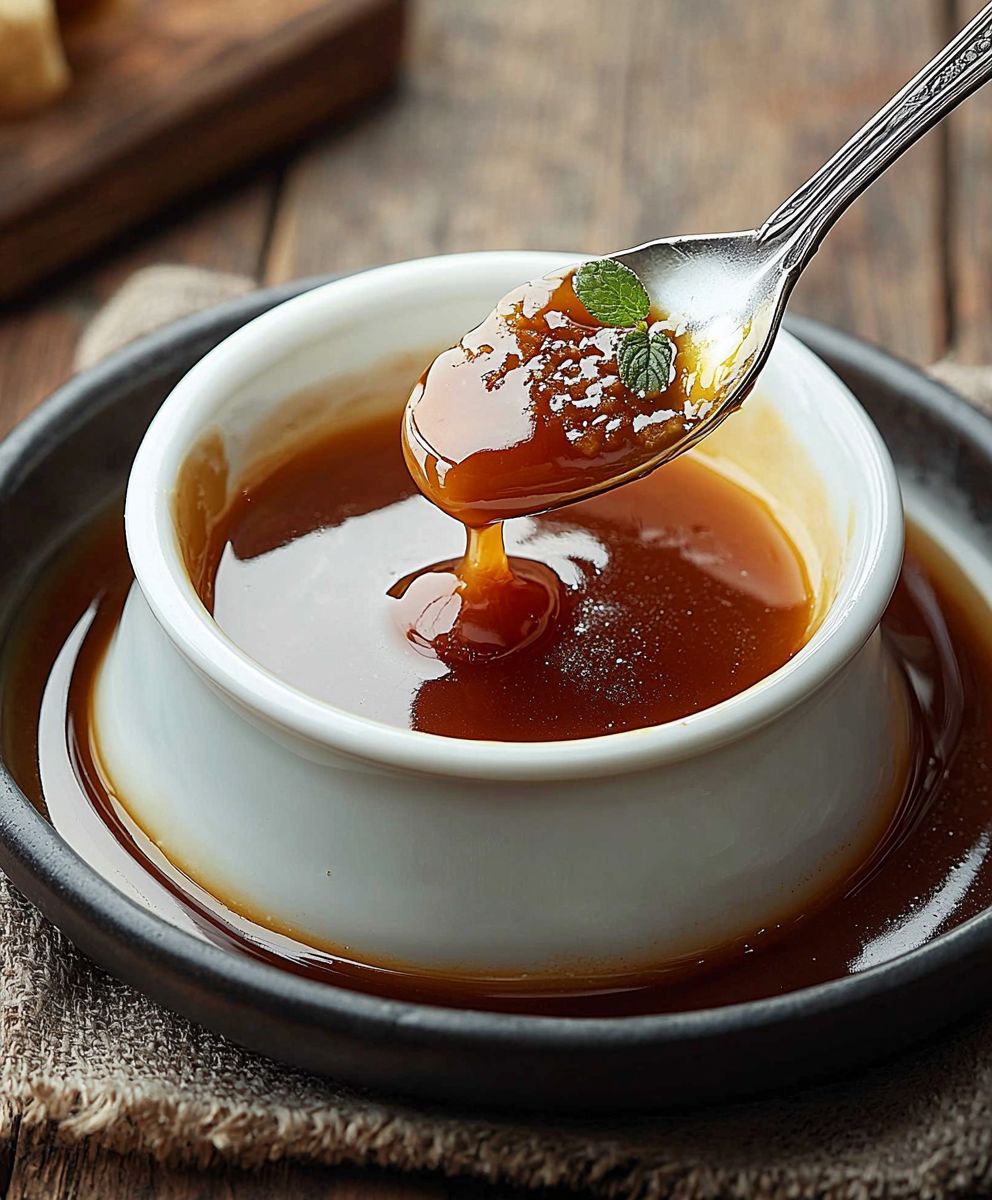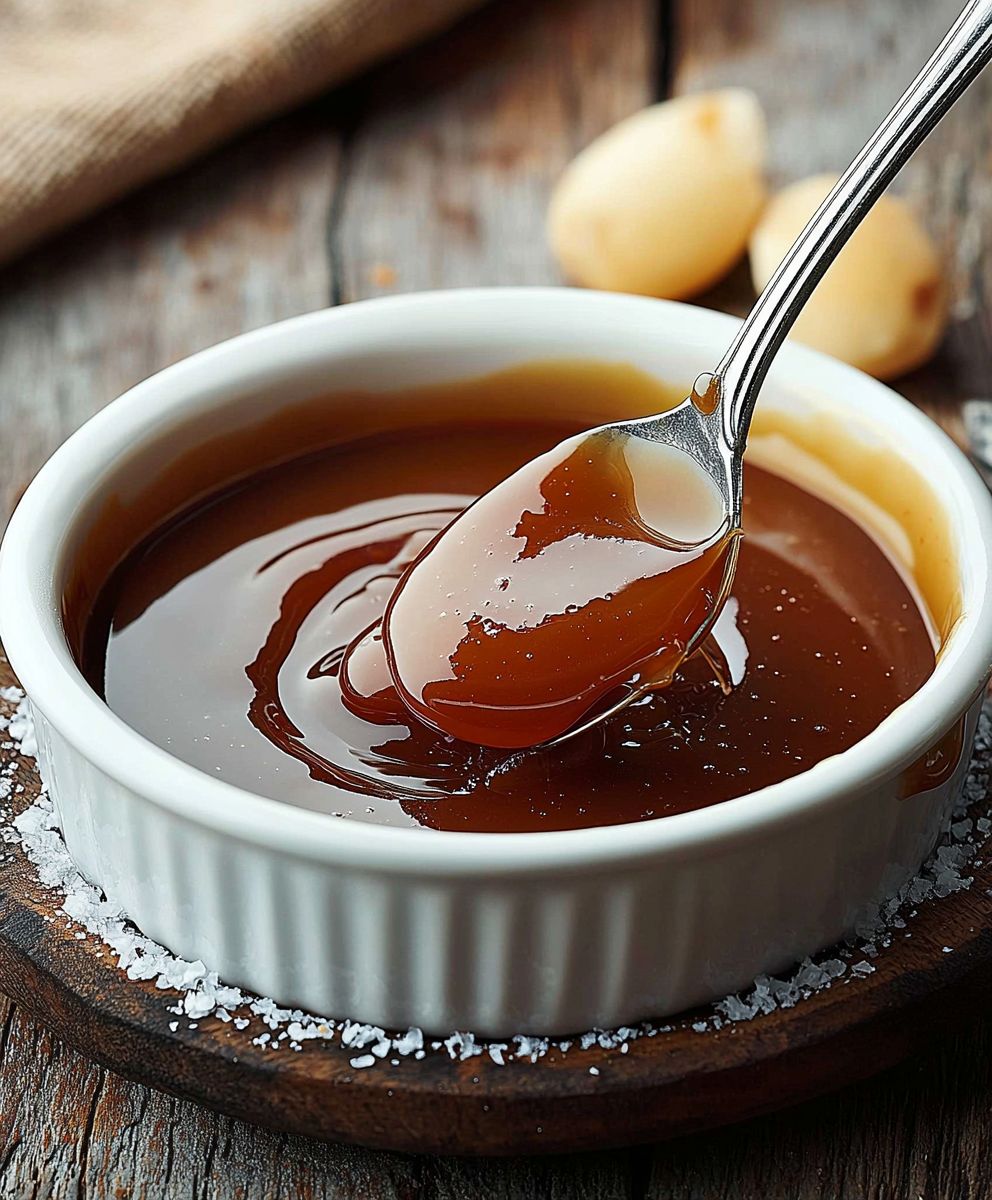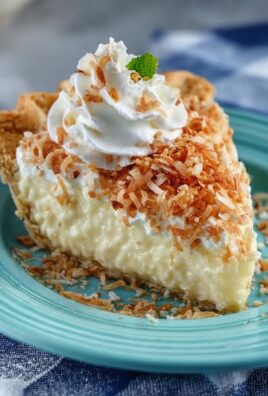Caramel Sauce, that golden elixir of sweetness, is more than just a topping; it’s a culinary hug in a jar. Have you ever wondered how something so simple could elevate desserts to a whole new level of indulgence? I certainly have! From drizzling it over ice cream to using it as a decadent dip for apples, this versatile sauce is a staple in my kitchen, and I’m excited to share my foolproof recipe with you.
While its exact origins are debated, the history of caramel dates back centuries, with variations appearing in different cultures around the world. The basic principle heating sugar until it transforms into a rich, amber-colored liquid has remained consistent, a testament to its enduring appeal. It’s a technique that transcends borders and generations, bringing joy to sweet tooths everywhere.
But what is it about Caramel Sauce that makes it so irresistible? For me, it’s the perfect balance of sweet and slightly bitter notes, the smooth, velvety texture that coats your tongue, and the sheer convenience of having a jar of liquid gold ready to transform any dessert into a masterpiece. Whether you’re a seasoned baker or a kitchen novice, this recipe is easy to follow and guaranteed to impress. So, let’s get started and create some caramel magic!

Ingredients:
- 1 cup (200g) granulated sugar
- 1/4 cup (60ml) water
- 1/2 cup (120ml) heavy cream, warmed
- 4 tablespoons (57g) unsalted butter, cut into 4 pieces
- 1/4 teaspoon sea salt (or more to taste)
Making the Caramel:
- Combine Sugar and Water: In a medium-sized, heavy-bottomed saucepan, combine the granulated sugar and water. Using a wooden spoon or heat-resistant spatula, stir the mixture briefly to ensure the sugar is moistened. This helps prevent sugar crystals from forming prematurely. Don’t stir again after this initial mixing unless absolutely necessary, as stirring can encourage crystallization.
- Cook the Sugar Mixture: Place the saucepan over medium heat. The sugar will dissolve and the mixture will begin to simmer. Continue to cook, without stirring, until the sugar turns a deep amber color. This process can take anywhere from 8 to 12 minutes, depending on your stove and the saucepan you’re using. Keep a close eye on it, as the sugar can burn quickly once it starts to caramelize. The color change will happen gradually at first, then accelerate rapidly towards the end. You’re looking for a rich, dark amber think the color of a copper penny. If you have a candy thermometer, it should read around 340-350°F (170-177°C).
- Swirling the Pan (Optional but Recommended): If you notice the sugar caramelizing unevenly, you can gently swirl the pan to distribute the heat. Avoid stirring with a utensil, as this can cause crystallization. Swirling helps ensure that all the sugar caramelizes at the same rate.
- Adding the Warm Cream: Once the sugar has reached the desired amber color, immediately remove the saucepan from the heat. This is a crucial step, as the residual heat can cause the caramel to burn. Carefully pour in the warmed heavy cream. Be extremely cautious, as the mixture will bubble vigorously and steam will be released. The caramel will seize up and harden initially this is normal.
- Stirring in the Cream: Return the saucepan to low heat. Using a wooden spoon or heat-resistant spatula, gently stir the mixture until the caramel dissolves back into the cream and the sauce is smooth. This may take a few minutes, so be patient. Continue stirring until all the hardened caramel has melted and the sauce is homogenous.
- Adding the Butter: Remove the saucepan from the heat again. Add the butter, one piece at a time, stirring until each piece is fully incorporated into the sauce. The butter will add richness and a silky texture to the caramel. Make sure the butter is completely melted and emulsified into the sauce.
- Adding the Salt: Stir in the sea salt. The salt enhances the sweetness of the caramel and adds a delightful depth of flavor. You can adjust the amount of salt to your liking. Start with 1/4 teaspoon and add more to taste. Some people prefer a saltier caramel, while others prefer a more subtle flavor.
- Cooling and Storing: Allow the caramel sauce to cool slightly in the saucepan before transferring it to a heat-safe jar or container. The sauce will thicken as it cools. Store the caramel sauce in the refrigerator for up to 2 weeks. Before using, you can gently reheat it in the microwave or in a saucepan over low heat until it reaches your desired consistency.
Troubleshooting:
- Crystallization: If your sugar crystallizes during the cooking process, don’t panic! You can try adding a small amount of lemon juice or corn syrup to the mixture. These ingredients can help prevent further crystallization. However, the best way to avoid crystallization is to avoid stirring the sugar mixture after the initial mixing.
- Burnt Caramel: If your caramel burns, unfortunately, there’s no saving it. You’ll need to discard it and start over. Burnt caramel will have a bitter taste that will ruin the entire sauce. To prevent burning, keep a close eye on the sugar mixture and remove it from the heat as soon as it reaches the desired amber color.
- Grainy Texture: A grainy texture can be caused by undissolved sugar crystals. Make sure the sugar is completely dissolved in the water before you start cooking the mixture. Also, avoid stirring the mixture excessively, as this can also contribute to a grainy texture.
- Thin Caramel: If your caramel sauce is too thin, you can simmer it over low heat for a few more minutes to allow some of the moisture to evaporate. Be careful not to burn the sauce.
- Thick Caramel: If your caramel sauce is too thick, you can add a small amount of warm water or cream to thin it out. Stir until the sauce reaches your desired consistency.
Tips for Success:
- Use a Heavy-Bottomed Saucepan: A heavy-bottomed saucepan will distribute heat more evenly, which will help prevent the sugar from burning.
- Use a Clean Saucepan: Make sure your saucepan is clean and free of any residue before you start making the caramel. Even a small amount of residue can cause crystallization.
- Don’t Stir Too Much: As mentioned earlier, avoid stirring the sugar mixture after the initial mixing, as this can cause crystallization.
- Use Warm Cream: Warming the heavy cream before adding it to the caramel will help prevent the caramel from seizing up and hardening.
- Be Patient: Making caramel requires patience. Don’t rush the process. Allow the sugar to caramelize slowly and evenly.
- Practice Makes Perfect: Don’t be discouraged if your first batch of caramel isn’t perfect. Keep practicing, and you’ll eventually master the art of making caramel sauce.
Variations:
- Salted Caramel: As mentioned in the ingredients, you can adjust the amount of salt to your liking. For a more pronounced salted caramel flavor, you can use flaky sea salt as a finishing touch.
- Vanilla Caramel: Add 1 teaspoon of vanilla extract to the caramel sauce after you’ve added the butter.
- Bourbon Caramel: Add 1-2 tablespoons of bourbon to the caramel sauce after you’ve added the butter.
- Spiced Caramel: Add a pinch of cinnamon, nutmeg, or cardamom to the caramel sauce after you’ve added the butter.
- Coffee Caramel: Add 1-2 tablespoons of instant espresso powder to the sugar and water mixture before you start cooking it.
Serving Suggestions:
- Ice Cream Topping: Drizzle warm caramel sauce over your favorite ice cream.
- Cake Filling: Use caramel sauce as a filling for cakes and cupcakes.
- Brownie Topping: Drizzle caramel sauce over brownies.
- Apple Dip: Serve caramel sauce as a dip for apple slices.
- Coffee or Hot Chocolate: Stir a spoonful of caramel sauce into your coffee or hot chocolate.
- Pancakes or Waffles: Drizzle caramel sauce over pancakes or waffles.
- Cheesecake Topping: Use caramel sauce as a topping for cheesecake.
- Caramel Apples: Use the caramel sauce to make homemade caramel apples.
- Brie Cheese: Pour warm caramel over a wheel of brie cheese and bake until melted. Serve with crackers or baguette slices.
- Caramel Latte: Add caramel sauce to your latte for a delicious caramel latte.
Equipment You’ll Need:
- Medium-sized, heavy-bottomed saucepan
- Wooden spoon or heat-resistant spatula
- Measuring cups and spoons
- Heat-safe jar or container for storing the caramel sauce
Safety Precautions:
- Hot Sugar: Be extremely careful when working with hot sugar, as it can cause severe burns.
- Steam: Be cautious when adding the warm cream to the caramel, as the mixture will bubble vigorously and steam will be released.
- Children: Keep children away from the stove while you’re making caramel.
- Oven Mitts: Use oven mitts to protect your hands from the heat.

Conclusion:
So, there you have it! This caramel sauce recipe isn’t just another recipe; it’s a gateway to a world of decadent desserts and delightful treats. I truly believe that once you’ve tasted homemade caramel sauce, you’ll never go back to the store-bought stuff. The depth of flavor, the rich texture, and the sheer satisfaction of creating something so delicious from scratch are simply unmatched. Why is this a must-try? Because it’s incredibly versatile, surprisingly easy to make, and tastes absolutely divine. Forget complicated techniques and endless ingredients lists. This recipe uses simple pantry staples and comes together in under 30 minutes. Plus, the result is a smooth, buttery, and intensely flavorful caramel sauce that will elevate everything it touches. Think about drizzling it over a scoop of your favorite vanilla ice cream, transforming a simple bowl into an extraordinary sundae. Or perhaps you could use it as a dip for crisp apple slices, creating a healthy yet indulgent snack. The possibilities are truly endless! But the fun doesn’t stop there! Feel free to experiment with variations to make this caramel sauce your own signature creation. For a salted caramel version, simply add a generous pinch of sea salt flakes at the end of the cooking process. The salt enhances the sweetness and adds a delightful complexity to the flavor profile. If you’re feeling adventurous, try infusing the cream with vanilla bean or a cinnamon stick for an extra layer of warmth and spice. You could even add a tablespoon of your favorite bourbon or rum for a boozy kick that’s perfect for adult desserts. Serving suggestions abound! Imagine this caramel sauce cascading over a warm bread pudding, soaking into every nook and cranny. Or picture it drizzled over pancakes or waffles for a weekend brunch treat that’s sure to impress. It’s also fantastic as a filling for homemade chocolates or as a topping for cheesecakes and pies. You can even use it to create a caramel latte at home, saving you a trip to the coffee shop. Don’t be intimidated by the idea of making caramel. This recipe is designed to be foolproof, even for beginner cooks. Just follow the instructions carefully, keep a close eye on the sugar as it melts, and you’ll be rewarded with a luscious caramel sauce that will make you feel like a culinary genius. I’m so excited for you to try this recipe and experience the magic of homemade caramel sauce for yourself. I truly believe it will become a staple in your kitchen, a go-to ingredient for adding a touch of sweetness and sophistication to all your favorite desserts. So, go ahead, gather your ingredients, and get ready to create something truly special. And when you do, please share your experience with me! I’d love to hear how you used your caramel sauce, what variations you tried, and what your family and friends thought of it. You can leave a comment below, tag me on social media, or send me an email. I can’t wait to see what delicious creations you come up with! Happy cooking, and enjoy every single bite of your homemade caramel sauce! Print
Caramel Sauce: The Ultimate Guide to Making Perfect Caramel
- Total Time: 17 minutes
- Yield: 1 1/2 cups 1x
Description
Rich, decadent homemade caramel sauce perfect for topping ice cream, cakes, or enjoying with apples. Simple ingredients yield a smooth, buttery caramel with a hint of salt.
Ingredients
- 1 cup (200g) granulated sugar
- 1/4 cup (60ml) water
- 1/2 cup (120ml) heavy cream, warmed
- 4 tablespoons (57g) unsalted butter, cut into 4 pieces
- 1/4 teaspoon sea salt (or more to taste)
Instructions
- Combine Sugar and Water: In a medium-sized, heavy-bottomed saucepan, combine the granulated sugar and water. Using a wooden spoon or heat-resistant spatula, stir the mixture briefly to ensure the sugar is moistened. Don’t stir again after this initial mixing unless absolutely necessary, as stirring can encourage crystallization.
- Cook the Sugar Mixture: Place the saucepan over medium heat. The sugar will dissolve and the mixture will begin to simmer. Continue to cook, without stirring, until the sugar turns a deep amber color. This process can take anywhere from 8 to 12 minutes, depending on your stove and the saucepan you’re using. Keep a close eye on it, as the sugar can burn quickly once it starts to caramelize. The color change will happen gradually at first, then accelerate rapidly towards the end. You’re looking for a rich, dark amber think the color of a copper penny. If you have a candy thermometer, it should read around 340-350°F (170-177°C).
- Swirling the Pan (Optional but Recommended): If you notice the sugar caramelizing unevenly, you can gently swirl the pan to distribute the heat. Avoid stirring with a utensil, as this can cause crystallization. Swirling helps ensure that all the sugar caramelizes at the same rate.
- Adding the Warm Cream: Once the sugar has reached the desired amber color, immediately remove the saucepan from the heat. This is a crucial step, as the residual heat can cause the caramel to burn. Carefully pour in the warmed heavy cream. Be extremely cautious, as the mixture will bubble vigorously and steam will be released. The caramel will seize up and harden initially this is normal.
- Stirring in the Cream: Return the saucepan to low heat. Using a wooden spoon or heat-resistant spatula, gently stir the mixture until the caramel dissolves back into the cream and the sauce is smooth. This may take a few minutes, so be patient. Continue stirring until all the hardened caramel has melted and the sauce is homogenous.
- Adding the Butter: Remove the saucepan from the heat again. Add the butter, one piece at a time, stirring until each piece is fully incorporated into the sauce. The butter will add richness and a silky texture to the caramel. Make sure the butter is completely melted and emulsified into the sauce.
- Adding the Salt: Stir in the sea salt. The salt enhances the sweetness of the caramel and adds a delightful depth of flavor. You can adjust the amount of salt to your liking. Start with 1/4 teaspoon and add more to taste. Some people prefer a saltier caramel, while others prefer a more subtle flavor.
- Cooling and Storing: Allow the caramel sauce to cool slightly in the saucepan before transferring it to a heat-safe jar or container. The sauce will thicken as it cools. Store the caramel sauce in the refrigerator for up to 2 weeks. Before using, you can gently reheat it in the microwave or in a saucepan over low heat until it reaches your desired consistency.
Notes
- Crystallization: If your sugar crystallizes during the cooking process, don’t panic! You can try adding a small amount of lemon juice or corn syrup to the mixture. These ingredients can help prevent further crystallization. However, the best way to avoid crystallization is to avoid stirring the sugar mixture after the initial mixing.
- Burnt Caramel: If your caramel burns, unfortunately, there’s no saving it. You’ll need to discard it and start over. Burnt caramel will have a bitter taste that will ruin the entire sauce. To prevent burning, keep a close eye on the sugar mixture and remove it from the heat as soon as it reaches the desired amber color.
- Grainy Texture: A grainy texture can be caused by undissolved sugar crystals. Make sure the sugar is completely dissolved in the water before you start cooking the mixture. Also, avoid stirring the mixture excessively, as this can also contribute to a grainy texture.
- Thin Caramel: If your caramel sauce is too thin, you can simmer it over low heat for a few more minutes to allow some of the moisture to evaporate. Be careful not to burn the sauce.
- Thick Caramel: If your caramel sauce is too thick, you can add a small amount of warm water or cream to thin it out. Stir until the sauce reaches your desired consistency.
- Use a Heavy-Bottomed Saucepan: A heavy-bottomed saucepan will distribute heat more evenly, which will help prevent the sugar from burning.
- Use a Clean Saucepan: Make sure your saucepan is clean and free of any residue before you start making the caramel. Even a small amount of residue can cause crystallization.
- Don’t Stir Too Much: As mentioned earlier, avoid stirring the sugar mixture after the initial mixing, as this can cause crystallization.
- Use Warm Cream: Warming the heavy cream before adding it to the caramel will help prevent the caramel from seizing up and hardening.
- Be Patient: Making caramel requires patience. Don’t rush the process. Allow the sugar to caramelize slowly and evenly.
- Practice Makes Perfect: Don’t be discouraged if your first batch of caramel isn’t perfect. Keep practicing, and you’ll eventually master the art of making caramel sauce.
- Prep Time: 2 minutes
- Cook Time: 15 minutes




Leave a Comment